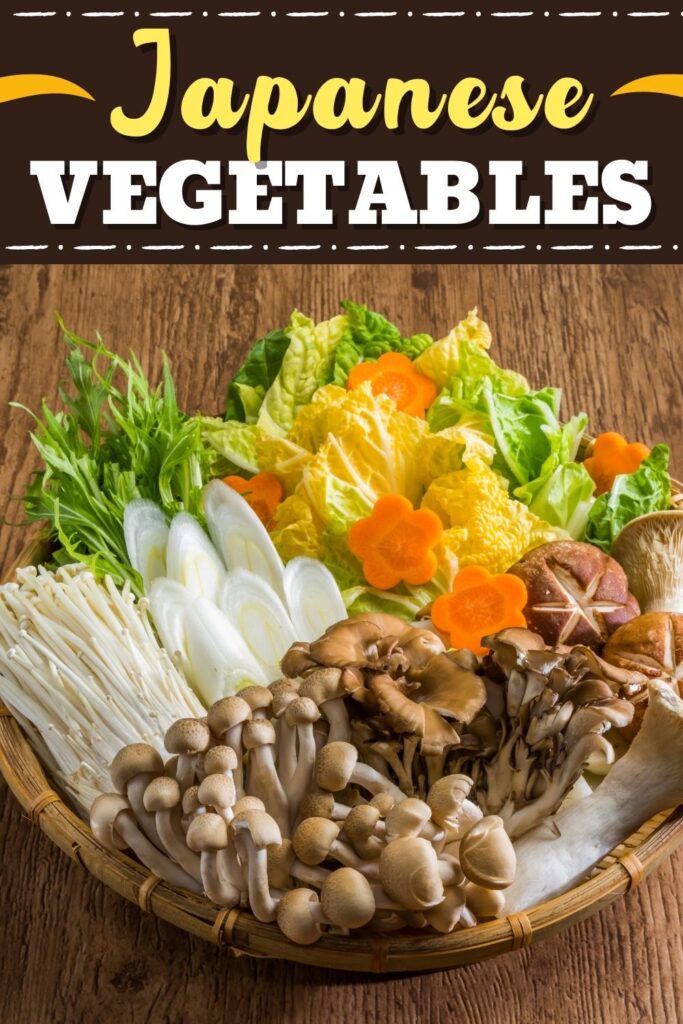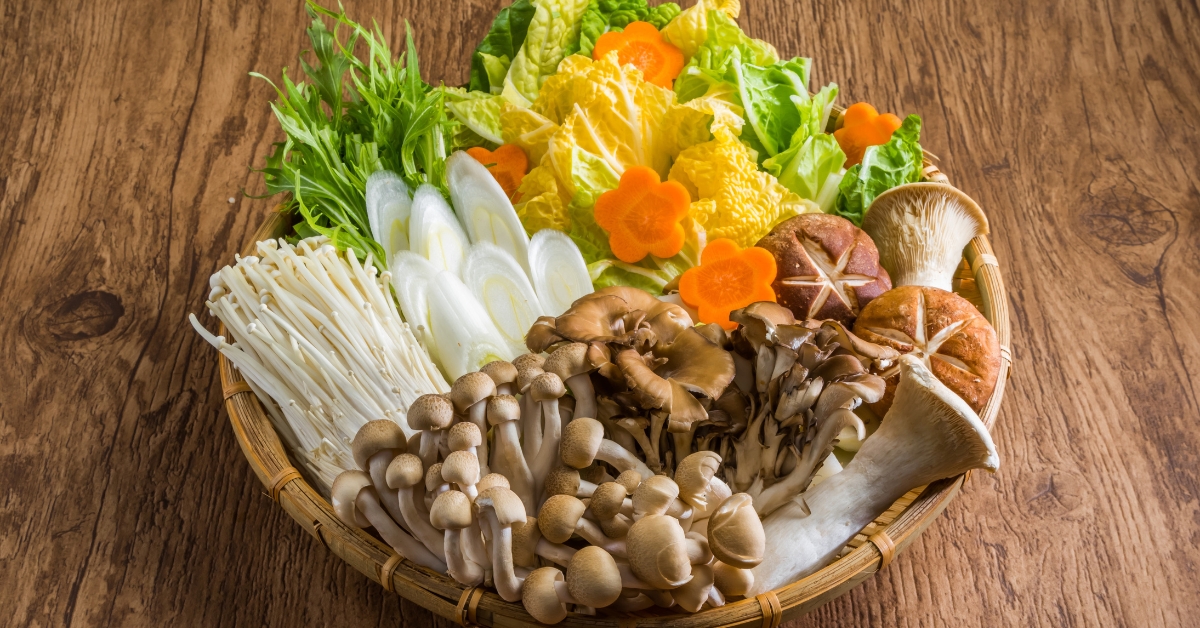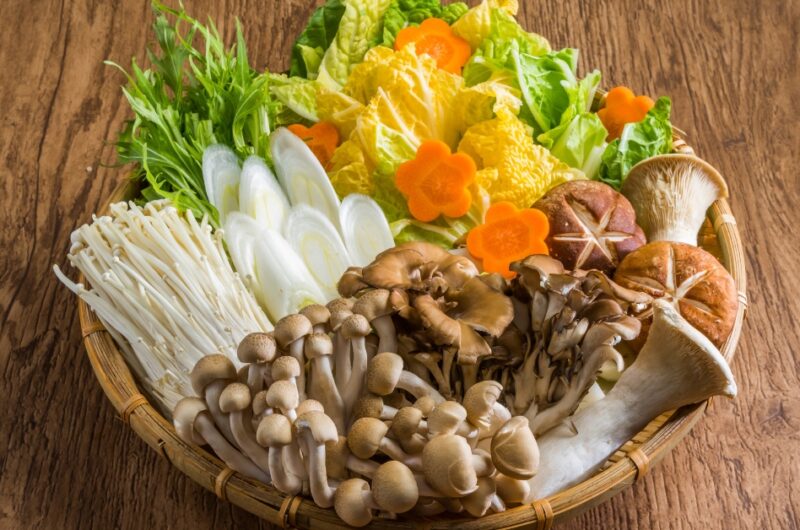To recreate authentic Japanese cuisine at home, you must get familiar with Japanese vegetables.
Luckily, I have a few right here for you to check out.
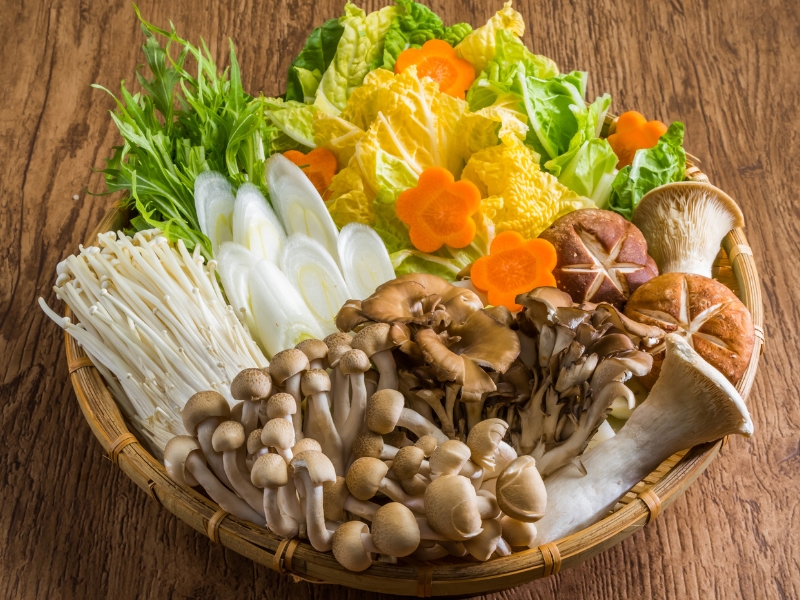
While most of the vegetables on this list may require a trip to the Japanese market, some are readily available.
For example, veggies like shishito peppers and napa cabbage are globally beloved.
Meanwhile, more niche veggies, like myoga and shiso, are harder to track down.
But from mustard greens and bamboo shoots to mushrooms and peppers, these Japanese vegetables are sure to bring the flavors of Japan right into your kitchen.
13 Unique Japanese Vegetables You Should Know
Whether you want to create an authentic hot pot, stir fry, or incorporate new and exciting veggies into your diet, these Japanese vegetables are worth checking out.
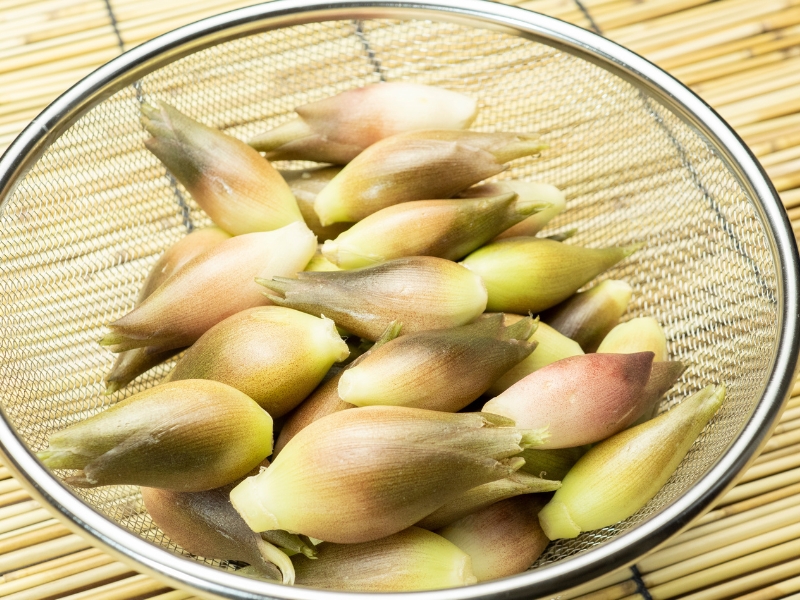
1. Myoga (Japanese Ginger)
Myoga, or Japanese ginger, is different than what you think.
Instead of eating the root of this plant, Japanese farmers harvest the flower and shoots.
It has a hearty crunch and very delicate ginger and floral notes.
Ginger root is very potent to the point of spicy, but Japanese ginger is mild. It’s often chopped finely and added to hot pots, soups, and salads.
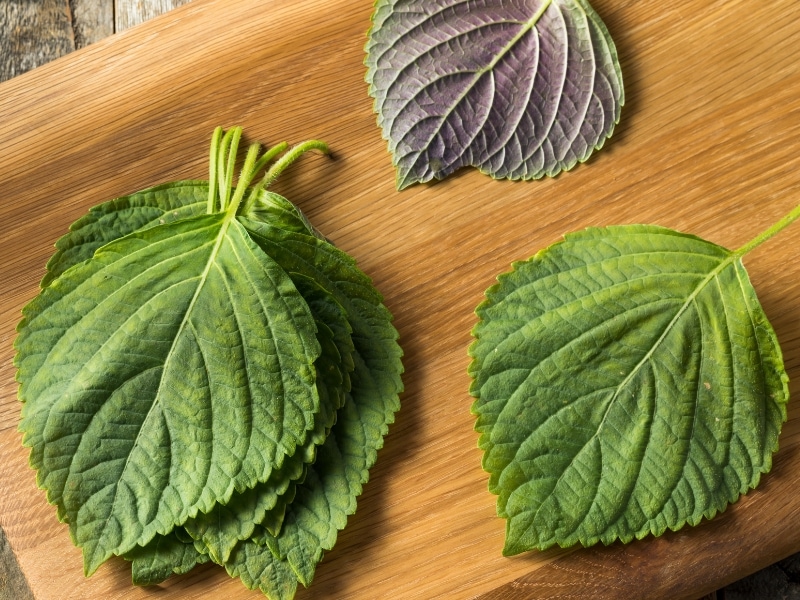
2. Shiso (Perilla Leaf)
Shiso is Japan’s green superfood that’s quite similar to kale.
Rich in carotene, iron, and calcium, it even has anti-inflammatory properties.
So it’s one nutritious green, but it also features a very unusual taste and firm texture.
These leaves taste like all the herbs in your herb garden combined. I’m talking mint, tarragon, cilantro, anise, and basil.
Its hearty texture makes it great to wrap chunks of beef to dip in sauces or for serving alongside sashimi or salads.
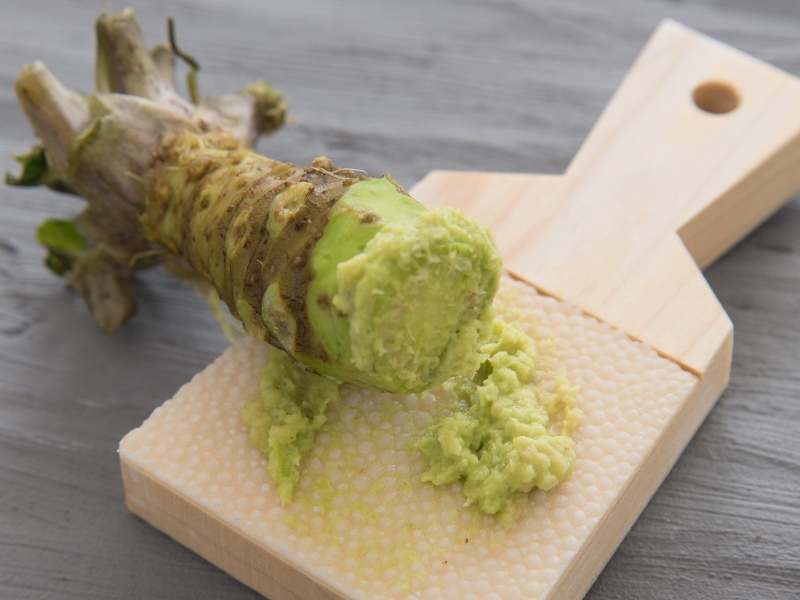
3. Wasabi Root
If you’ve ever had sushi, wasabi needs no introduction.
It’s a staple condiment for sushi, but the wasabi root is much more than that. And when consumed raw, it’s not as spicy as you think.
The wasabi root looks like a green ginger root and boasts spicy flavors similar to horseradish or hot mustard.
Premade wasabi condiments will likely melt your sinuses, but fresh wasabi root is much milder.
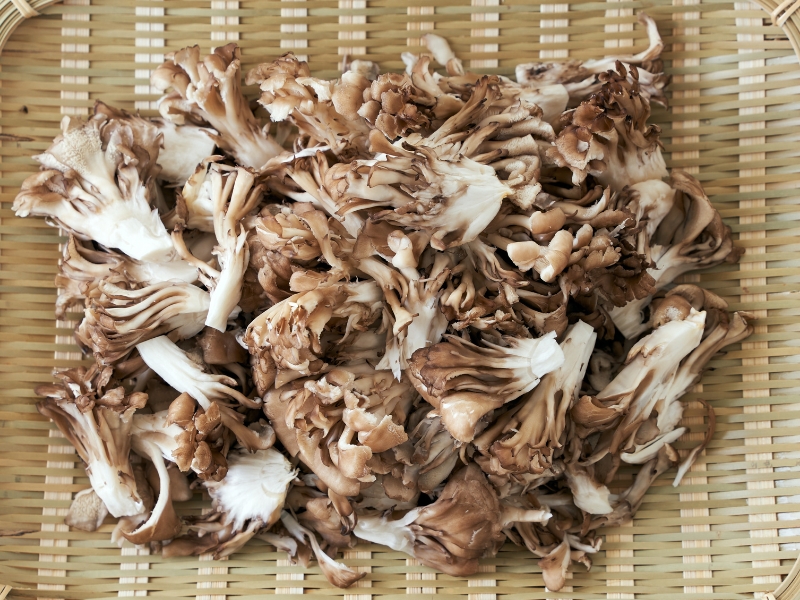
4. Maitake Mushrooms (Hen-of-the-Woods)
Maitake mushrooms are one of Japan’s most popular fungi, and for good reason.
They boast a robust and earthy flavor, like any good mushroom. But what makes maitake unique is its peppery aftertaste.
The flavors go well with just about anything. So mix them into a stir fry, or roast them with a bit of seasoning to serve with a meaty main course.
The maitake mushroom is worth a trip to the Japanese market if you love mushrooms!
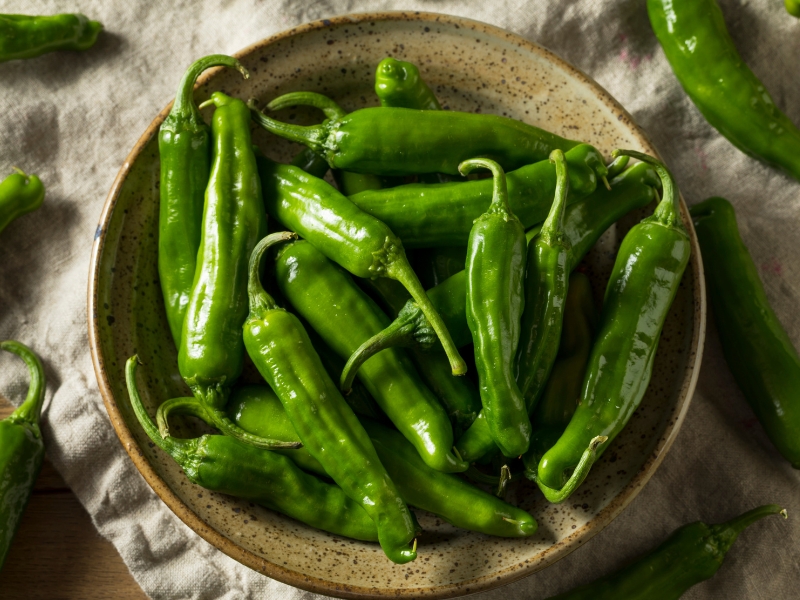
5. Shishito Peppers (Japanese Green Pepper)
While most Japanese vegetables aren’t available at your average grocery store, shishito peppers are famous worldwide.
Their delicately sweet and smoky flavors make them a fantastic addition to chili, pasta, or just roasted and served as a delicious side dish.
While they’re not hot, sometimes a shishito pepper goes rogue.
One in every ten shishito peppers is spicy, so always taste-test them before tossing them into a hot pot.

6. Mitsuba (Japanese Parsley)
Mitsuba looks almost identical to Italian parsley, down to everything but the taste.
It has a distinct earthy and bitter flavor, similar to celery, with a slight parsley aftertaste.
It’s a great herb to infuse intense earthy flavors into recipes, like omelets, sushi rolls, sauces, and stews.
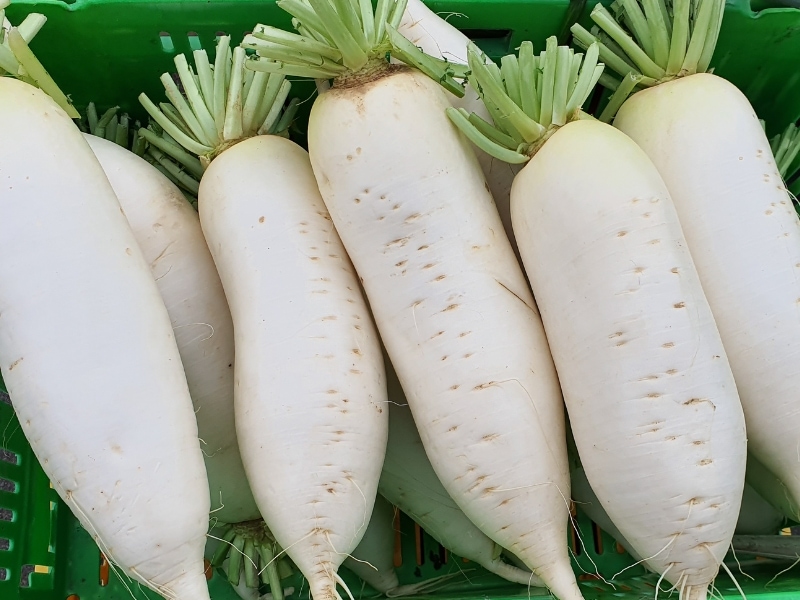
7. Daikon (Giant White Radish)
Daikon radishes are another Japanese vegetable you might find at your local grocery store.
While red radishes are bright, peppery, and sometimes even a little spicy, daikons are incredibly mild.
They have the same patented crunch and juiciness as a red radish but are slightly sweet rather than spicy.
When used raw in Japanese dishes, daikons carry a very subtle spice. However, the spiciness melts into a delicious sweetness when you cook them.
They’re great eaten raw or added to a soup to provide an incredible depth of flavor.

8. Hakusai (Chinese Cabbage)
Hakusai is a versatile winter vegetable that goes by many names. It’s also referred to as “Chinese cabbage” or “napa cabbage“.
It’s another Japanese veggie you can find in the cabbage section of your local supermarket.
Hakusai is a staple of Japanese comfort food because of its sweet flavor and ability to absorb sauces like a dream.
It appears almost everywhere in Japanese cooking, so pick some up the next time you’re at the store!
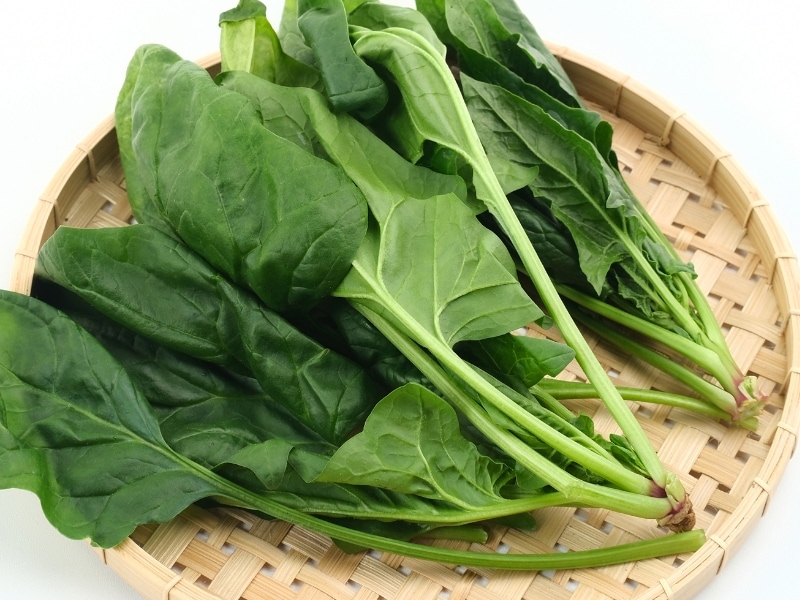
9. Horenso (Japanese Spinach)
Japanese spinach has all the hallmarks of classic spinach: it’s high in nutrients, has strong earthy flavors, and is super versatile.
Bright, crunchy, and full of earthy flavors, it’s also an excellent side dish to serve with meaty main courses.
One of the most popular Japanese spinach dishes is horenso no goma-ae.
It infuses lightly blanched Japanese spinach in a nutty sesame sauce that’s rich, flavorful, and very nutritious!
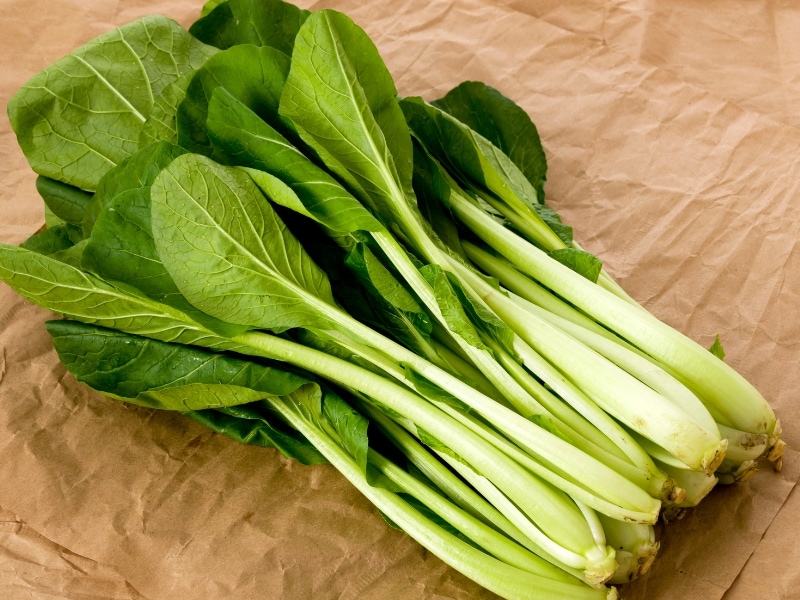
10. Komatsuna (Japanese Mustard Spinach)
While horenso is very similar to classic spinach, komatsuna is sweeter with a mustardy finish.
It differs from other spinach because the sweetness masks any bitter notes. So if you don’t like bitter veggies, komatsuna is worth checking out!
It’s a great addition to dishes that demand a bright kick of greens, like stews, pasta, pizza, and sandwiches.
It may require a trip to your local Asian market, but it’s worth it.
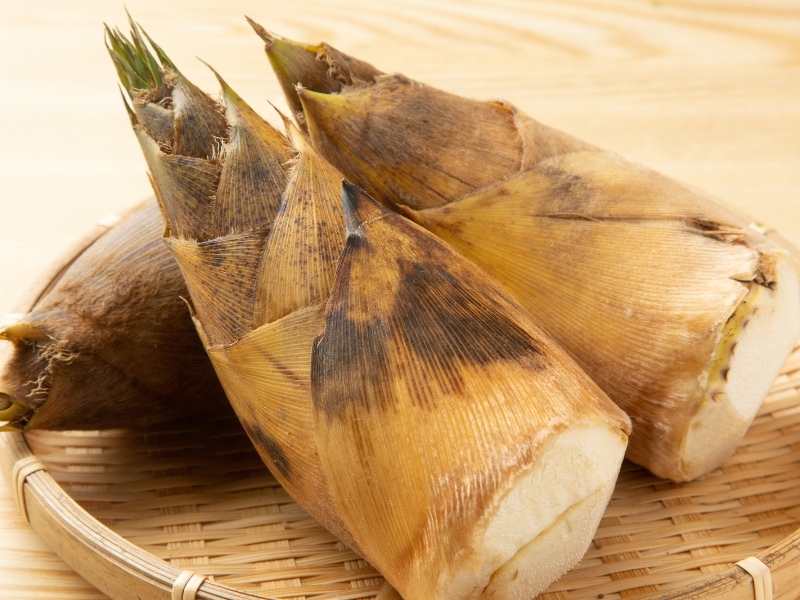
11. Takenoko (Bamboo Shoots)
Takenoko is the tip of a young bamboo plant that’s insanely crispy and crunchy, even after it’s cooked.
Cooking with takenoko is a great way to deliver subtle flavors and a crunchy texture to your meals.
However, it’s important to note that when raw, takenoko is incredibly bitter.
So it’s best to boil out all the bitterness before adding it to your dinner.
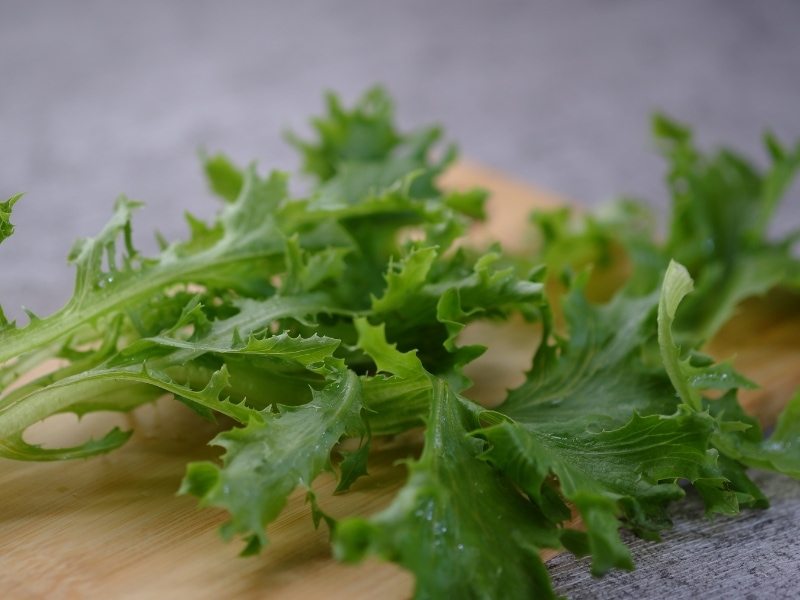
12. Mizuna (Japanese Mustard Greens)
Mizuna goes by a few names, such as Japanese mustard greens or spider mustard (due to its unique spide-like shape).
It has a peppery flavor, similar to arugula, with a strong bitter taste.
The bitter notes in mizuna are too powerful to throw into a salad. So instead, it’s commonly sautéed with bright seasoning.
It’s also pickled, tossed into stir-fries, or added to hot pots.
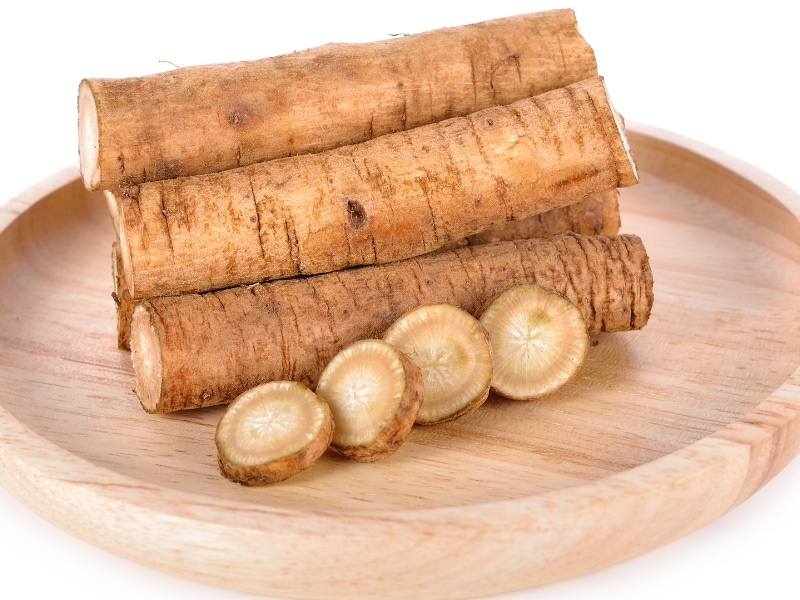
13. Gobo (Burdock Root)
The gobo root may not look edible (it resembles a tree root), but it’s so flavorful!
When raw, it has a texture and flavor similar to a red radish. However, the flavors of the burdock root shine once cooked.
Cooked burdock root has a unique nutty and savory flavor that pairs well with chicken, pork, rice, or potatoes.
It’s utilized in hot pots, stews, or in a melody of roasted Japanese vegetables.
